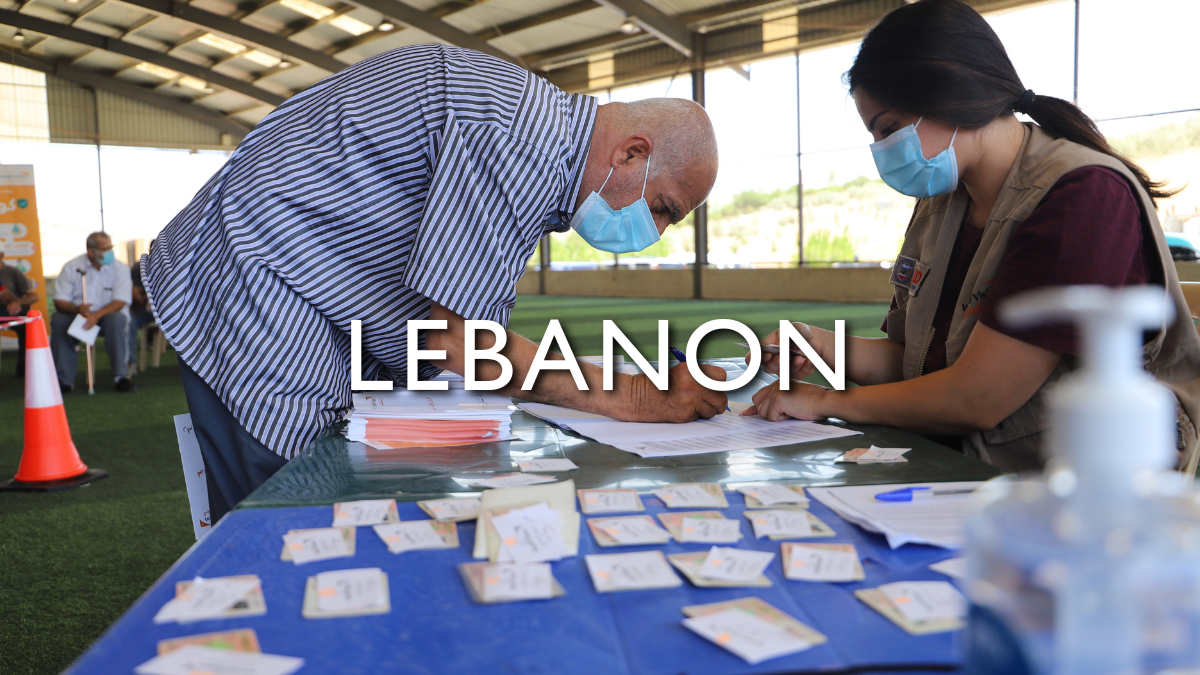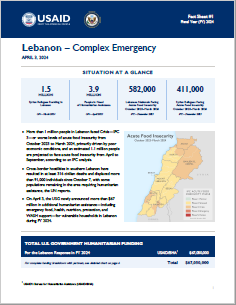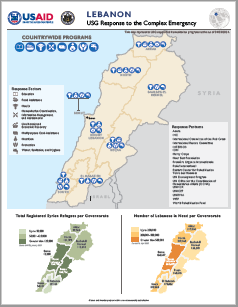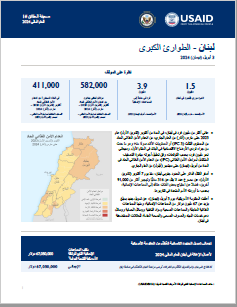
Lebanon has experienced several concurrent socioeconomic shocks and crises since 2019, including the collapse of the Lebanese pound, a cholera outbreak, the explosions at the Port of Beirut in 2020, increasing food insecurity, and ongoing political instability. The spillover effects from the Syrian crisis, inflation of food and energy prices, and high unemployment rates continue to drive high levels of humanitarian need in Lebanon, which hosts the largest number of refugees per capita of any country. Since October 2023, increasingly violent clashes along Lebanon’s southern border with Israel have displaced nearly 100,000 people, exacerbating existing vulnerabilities and humanitarian needs. The UN estimates that 3.7 million people—65 percent of the country’s population—will require humanitarian assistance in 2024.
USAID remains committed to supporting partners in reaching local, migrant, and refugee populations across Lebanon with life-saving humanitarian assistance, including food and nutrition aid, health care services, protection support, and water, sanitation, and hygiene programs. USAID provided more than $67 million in humanitarian assistance in Fiscal Year 2024 alone to address the needs of vulnerable populations residing in Lebanon.



